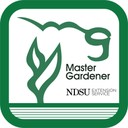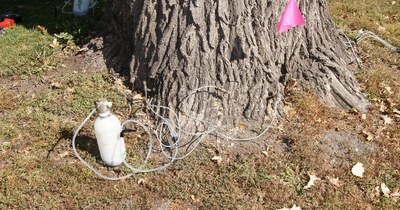Emerald Ash Borer - Treatments
Since EAB was discovered in the U.S., researchers have focused much of their efforts towards finding effective control treatments. Experimental results are variable – some treatments are highly effective, but others are less so. The latest research results can be found in the 2nd edition of ‘Insecticide Options for Protecting Ash Trees from Emerald Ash Borer’, which came out in 2014: http://www.emeraldashborer.info/files/multistate_EAB_Insecticide_Fact_Sheet.pdf. A summary is listed below. Note that new research results are coming out all the time, so recommendations may change is the future. As always, follow all pesticide label directions carefully.
Spray-type treatments with traditional broad-spectrum insecticides have been the least effective at controlling EAB. Quite simply, EAB adults can be active through most of the summer, and the insecticides didn’t last long enough to provide enough control. Additionally, obtaining a thorough spray coverage is very difficult, especially with larger trees.
Systemic chemicals, those that move within the tree, have proven more effective. Those with the active ingredients ‘imidacloprid’ and ‘dinotefuran’ have been researched extensively and are available in multiple formulations. Some formulations can be applied as a soil drench, a soil injection, a granular product applied to the soil surface, a bark-penetrating spray, or a stem injection (professionals only). These chemicals move through the tree to the tissues that EAB feed on. Control is not 100%, but these pesticides do a very good job of reducing the number of EAB larvae feeding beneath the bark.The most effective insecticide treatment by far has been stem injections with the active ingredient ‘emamectin benzoate’. Test results have shown that this product provides better than 99% control of EAB larvae – and that level of protection lasts for at least two years. Many communities in the Midwest have found that a combination of insecticide treatments, along with timely removal of low-value trees, is incredibly useful in managing the ash trees in their urban forests.
Additional information about EAB is available from the ND Department of Agriculture at: https://www.nd.gov/ndda/plant-industries/pest-survey-and-outreach/emerald-ash-borer-eab. For more information about tree pests such as Dutch elm disease, gypsy moth, and others, please visit the ND Invasives website at: http://www.ndinvasives.org/.






